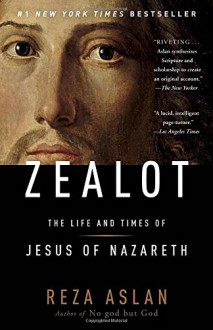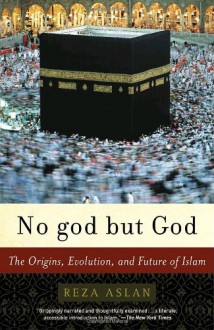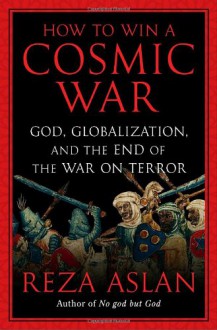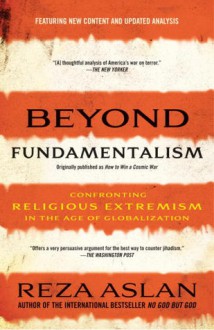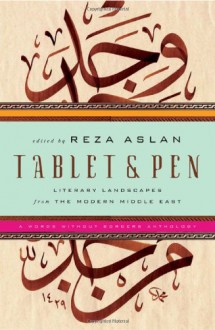
This is an accessible work of history, looking at what the historical evidence tells us about Jesus of Nazareth and his times. Not knowing much about the context of those times, I found it enlightening, though it sometimes seems that the author overstates the certainty with which much of anything about the ancient world can be known. In the end much of the book is educated guessing – worth reading because it is very educated, but not much can be proven.
Part 1 covers the context of first-century Palestine, a far-flung Roman province bursting with discontent about tribute requirements, leading to high taxes, leading to exploitation of the poor. Many men claimed the mantle of messiah, or the chosen one who would liberate their land from the Romans and restore God’s kingdom. Eventually the Jews revolted in 66 C.E. and kicked out the Romans, only for the Romans to return and wipe out Jerusalem four years later. In this milieu, and given the way the Romans executed Jesus (crucifixion was the standard punishment for sedition and treason, as a warning to others), the author builds a case for interpreting him as a political revolutionary. For instance, an act such as overturning the moneylenders’ tables at the Temple would have been a protest against the priests’ collaboration with Rome and enrichment of themselves at the expense of the common people.
Part 2 is more focused on the information in the gospels: what is credible from a historical perspective, and how Jesus’s words would have been understood at the time. Finally, Part 3 is about the early church in the aftermath of his death, particularly the schism between James (Jesus’s brother, who led the Jerusalem assembly) and Paul, who comes across as a bit of an egomaniac who reinvented Jesus’s message entirely, transforming it from a Jewish sect into an entirely new religion. Jesus claimed that he had come to fulfill Jewish law, while Paul decreed that he had replaced it; when Jesus was originally referred to as “Son of God,” the author argues that this designation meant simply the “chosen one” (David was also a “Son of God”) while Paul interpreted it literally. During his lifetime Paul did not have great success, but his version of Christianity was better suited to take off in a post-Jerusalem world, where the Jews had become pariah and the Temple no longer existed.
I found this to be an interesting and thought-provoking book. While not a fast read, it provides an engaging narrative and is readable and accessible to the non-academic reader. The author’s arguments in general seem extensive researched, well-documented and persuasive. When discounting sources or filling in gaps in the record, he generally explains his analysis rather than simply stating his conclusions as if they were fact.
However, it isn’t a perfect book. The organization can be a bit scattershot, jumping around in time and between general historical background and Jesus, especially in the early sections. There are no footnotes, and some assertions are supported by extensive endnotes while others are not. While not representative of the book as a whole, there are some eyebrow-raising arguments to authority, stating that “the overwhelming consensus” (204) among scholars tells us something, or that another author has “definitively proven” (240) something else. It is helpful to know which ideas are subjects of controversy and which aren’t, and I don’t expect the author to perform independent research on every single topic surrounding life in the ancient world, but it is an odd phrasing for a book premised on the method of drawing conclusions from primary sources even if they differ from established dogma.
More broadly speaking, the book’s analysis left me with big questions unanswered. If the Gospels were written decades after Jesus’s death by people who didn’t know him, and who did not live in a society where fact-checking and documentation were a thing (though the Romans kept extensive records on issues of interest such as tax collection), and were written as testaments of faith with the intention of converting non-Jews to their religion rather than as historical documents, then why remove some politically-charged bits but not others? The author argues that the Gospel writers must have changed the agency in Jesus’s execution from the Roman governor to the Jews for palatability to their intended audience, given that Pilate cared little to nothing what his subject population thought about anything, but why then leave in the overturning of the moneylenders’ tables, the sermon on the mount (which the author argues would have been about the new social order in God’s kingdom on earth rather than a spiritual promise), and other statements targeting the Temple and the Roman government?
And if the writers needed to transport Jesus’s birth to Bethlehem to argue that he fulfilled the prophecies, why would they have explained this through a census story that their readers would have known to be false, because the census not only didn’t happen at that time but did not work that way (the Roman census was about tallying up property in order to tax it, and putting the economy on hold for months for everyone to travel to their home village without said property would have been absurd)? It’s fair to say that I am hopelessly modern and nonreligious and can’t claim to understand the mindset of a first- or second-century convert, but immersion in a story to me depends on finding it at least plausible. It also seems likely that a new religion isn’t trying to recruit skeptics who will question its facts but rather true believers who will accept the religious leaders’ word. But there still seems to me to be a difference between facts that can be disproven, and unverifiable assertions that must be taken on faith, and why hand your opponents the former if you can avoid it?
So I wish the author would have delved more into the historicity of the Gospels as a whole rather than focusing on specific passages one at a time; for me at least it would have been helpful in evaluating the overall argument. Nevertheless, this is an interesting and educational book of reasonably short length, and I’m glad I read it.

 Log in with Facebook
Log in with Facebook 
